Home
"Am Spiegelgrund" (Städtische Jugendfürsorgeanstalt “Am
Spiegelgrund” Wien),
part of the Niederösterreichische
Landes-Heil-
und Pflegeanstalt für Nerven- und Geisteskranke "Am Steinhof";
in March
1942 renamed Heilpädagogische
Klinik der Stadt Wien "Am Spiegelgrund";
in
Nov.
1942 divided into Wiener Städtische Nervenklinik für
Kinder "Am Spiegelgrund" ("Municipal Mental Clinic for Children")
apart from the Wiener Städtische Erziehungsanstalt
"Am Spiegelgrund" ("Municipal Reformatory" -
also referred to as Wiener
Städtisches Erziehungsheim "Am Spiegelgrund")
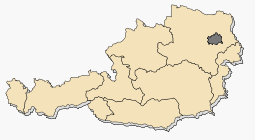
The Kinderfachabteilung in Vienna, the Städtische Jugendfürsorgeanstalt “Am
Spiegelgrund” Wien, operated from late July 1940 until May 1945. It was the
first of at least two "special children's wards" to open in Austria, and the
second one established overall. The clinic's medical directors
were Prof. Dr. Erwin Jekelius (until early 1942) and Dr. Ernst Illing
(since 1942), and responsible for the "special children's ward" were Dr.
Heinrich Gross, Dr. Margarethe Hübsch, and Dr. Marianne Türk. Dr.
Jekelius died in 1952 in a Soviet prison. Dr. Illing was sentenced to death
and executed in 1946. Dr. Gross had an illustrious career (see below). Dr.
Hübsch was acquitted, and Dr. Türk sentenced to 10 year incarceration (she
served two).
Close to 800 children died in the special children's ward in "Am
Spiegelgrund," making it a site of one of the largest number of
children murdered. The "special children's ward" was housed in pavilions 15
and 17. The reformatory was housed in pavilion 18. In pavilion 23 was the
Städtische Arbeitsanstalt Steinhof," which housed young women aged 20-22 and
considered deviant.
Source: author
In newspaper reports in the immediate postwar period there was little
question about the nature of the crimes - here illustrated by the heading
"The children's murderers of the Steinhof in the dock." This illustrates
that the murders were publicly known in what Wolfgang Neugebauer has called
a brief anti-fascist period after WWII during which perpetrators were
persecuted.
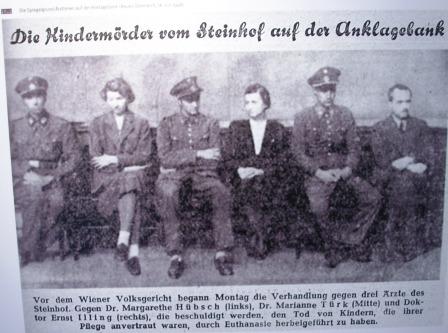 Source: Author's photo of exhibit
at the Spiegelgrund (2009)
Source: Author's photo of exhibit
at the Spiegelgrund (2009)
Dr. Gross was sentenced after World War II to two years for a single case of
manslaughter, but the verdict was set aside on a technicality, and Dr. Gross
became one of Austria's most prominent forensic experts. When in the late
1970s the Committee for Critical Medicine (Arbeitsgemeinschaft Kritische
Medizin) under the leadership of Dr. Werner Vogt made allegations about Dr.
Gross concerning his involvement in "children's euthanasia," the latter sued
for slander and damages but lost, with the High Court (Oberlandesgericht)
making a affirmative determination of Dr. Gross's complicit involvement in
and responsibility for the murders that happened in the "special children's
ward" - the beginning of the end of Dr. Gross's medical career. The
Arbeitgemeinschaft's dispute with Dr. Gross followed an incident in which
Friedrich Zawrel, survivor of Spiegelgrund, recognized Dr. Gross as one of
his torturers during the Nazi period, and Dr. Gross then wrote up a spurious
negative psychiatric assessment to have Zawrel committed in order to
cover up. This case had ended up in the press and come to the attention of
the Committee for Critical Medicine.
In 1988, the "year of reflection" (Bedenkjahr) inspired by the 50th
anniversary of Austria's integration with larger Germany (the "Anschluss"),
two commemorative plaques were placed on the hospital's territory, with the
inscription "In commemoration of the victims in psychiatry of the National
Socialist State, and as a warning. Established in 1988." Another
plaque with the same inscription was placed in the vicinity as well.
That year for the first time a commemorative event took place that included
staff. It was dedicated to the victims of NS-psychiatry in
the psychiatric establishments in Vienna. (see Gabriel/Neugebauer p.
9).
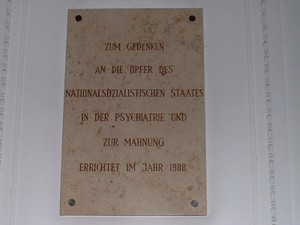
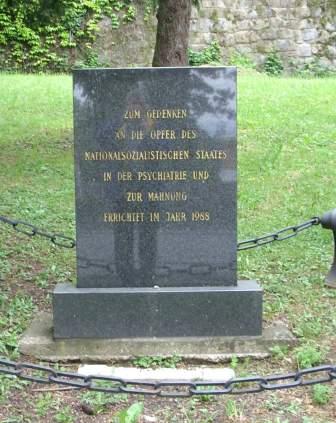 Source:
http://www.nachkriegsjustiz.at/vgew/1140_baumgartnerhoehe.php; author
Source:
http://www.nachkriegsjustiz.at/vgew/1140_baumgartnerhoehe.php; author
One year later the room where Dr. Gross’s ghastly collection of brain
specimens of victims was housed in the cellar of the hospital's pathology
section was re-commissioned as a "room of commemoration," simply by putting
up a plaque. The plaque displayed the following text: "The Psychiatric
Hospital Baumgartner Höhe established this room 50 years after the beginning
of the murderous program against the sick and disabled in commemoration of
the children who died in the Wiener Städtische Nervenklinik für Kinder Am
Spiegelgrund." There was no public acknowledgement about the
re-commissioning of the room, and the room was off limits to the general
public, as access was apparently only granted to nursing students as
part of their training and, occasionally, to journalists.
Sources:
http://de.doew.braintrust.at/popup.php?t=img&id=304 and Salzburger
Nachrichten, 19 Nov. 1994
The presentation of the "room" in such a farcical way as a "memorial" was
soon recognized as scandalous, as brain specimens from the victims, on the
basis of which Dr. Gross had launched his scientific career, remained stored
in the basement of the hospital. In 1992 the Green Party member and district
councilor Wolfgang Krisch suggested a burial of the specimens in an honorary
grave and a more appropriate way of documenting the crimes of the past in
the form of an appropriate memorial space. Dr. Wolfgang Neugebauer, then
director of the Documentation Center of Austrian Resistance, also advocated
for a more appropriate form of commemoration and sought to have Dr. Gross
finally criminally prosecuted. Relatives of victims were scandalized by
the way in which remains of victims were presented as well. After
discussions in which suggestions for a different form of memorial were
rejected at first, the clinic's director, Dr. Gabriel, was amenable to
considering different options for commemoration, such as an exhibit of the
history of the hospital, including the Nazi period, a memorial, or a
documentation with the display of such specimens.
A burial of the remains of the victims was at first made impossible by
the criminal investigations into Dr. Gross's criminal past, which commenced
in 1997 after documents formerly inaccessible in the GDR implicated Dr.
Gross, which led to reports and inquiries by the magazine "profil" (M.
Enigl), the medical dissertation by Matthias Dahl, efforts by the directory
of the Documentation Center of Austrian resistance to have Dr. Gross
charged, the Green Party, and reporting in international news
organizations. Dr. Gross ended up being charged with murder in 1999
(suffering from dementia, he was never held accountable and died in 2005).
Source: Koller, p. 116.
Remains of dead children misused for scientific investigations were buried
in 597 urns in April 2002 under exclusion of the public, to conform to
wishes of relatives. One urn was buried in the presence of representatives
of major religious organizations. A public commemorative event with the
symbolic burial of 2 additional urns was held on 28 April 2002 at the
victims' honorary grave in Vienna's Central Cemetery. The grave has a plaque
with the following inscription: "In memory of the children and youths who as
'life unworthy of living' fell victim to National-Socialist Euthanasia
in the then children's clinic Am Spiegelgrund in the years 1940 to
1945." A description of the event can be found here.
On the occasion of this burial one month later a permanent exhibit was
opened up in pavilion 5, first floor, for which the Documentation Center of
Austrian Resistance was responsible. The group that was charged with its
conception included representatives of public and civil organizations
as well as scholars with a background in history, medicine, and psychiatry.
The exhibit had as its theme the larger framework of Nazi medical crimes in
Vienna and included a commemorative display of some of the children, as they
had been photographed before their death, as well as some displays with
texts. It was initially conceptualized as a traveling exhibit and was thus
of a provisional nature. It was meagerly funded by the city of Vienna, which
apparently in 2002 had promised to establish a scientific center there for
research on the crimes.
 Source: cp-architektur.
Source: cp-architektur.
An online exhibit "War Against the 'Inferior': On the History of
Nazi Medicine in Vienna" opened also at the time, with information that
was more extensive than found on site. At the time, it was one of the most
extensive documentation of NS-"children's euthanasia" crimes found on
the Internet. The exhibitors decided to embrace online delivery of
information early in part because of the provisional and spatially
restricted nature of the offsite exhibit and because of in-house technical
expertise that made a fairly elaborate website possible without being
prohibitively expensive. The website has also been much easier to update and
enhance than an offline exhibit, and such updates to the websites did indeed
occur long before the offline exhibit was reconceptualized.
In November 2003 another memorial was erected, in the form of 772 light
stelae, one for each child victim. Its concept was designed by Tanja Walter.
The text display reads: "Memorial for the victims of the Spiegelgrund.
This memorial commemorates those children and youth who were murdered in the
Nazi euthanasia facility Am Spiegelgrund between 1940 and 1945. Each stela
stands for an extinguished life. The [stelae's] tight order reflects the
situation of the children, held hostage and deprived of their freedom."
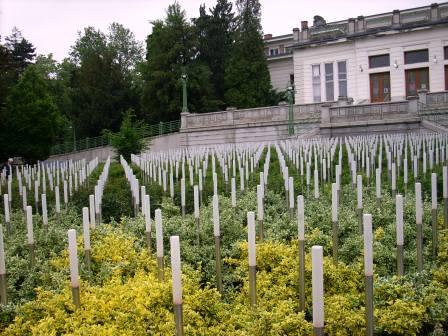
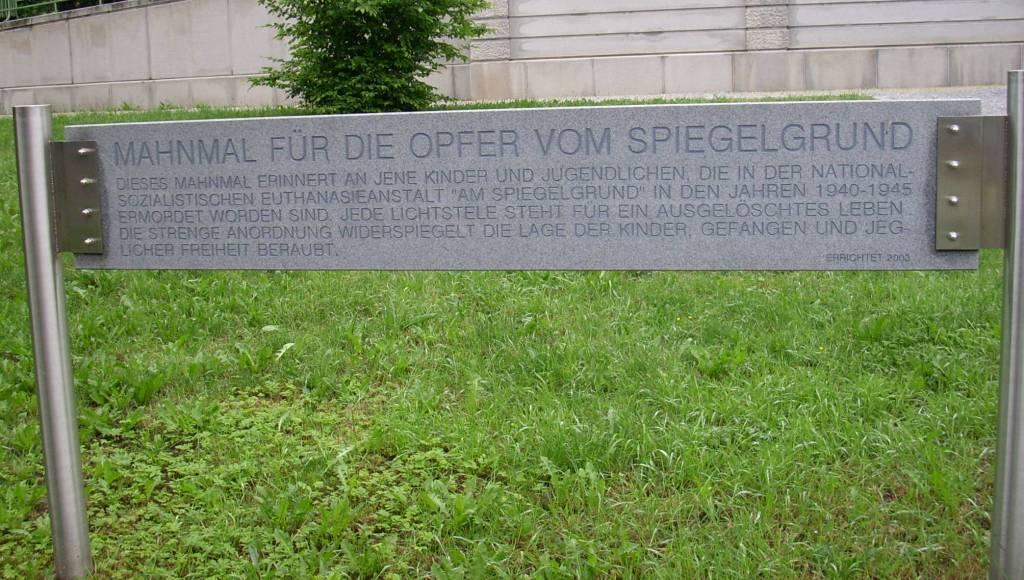 Source: Author
Source: Author
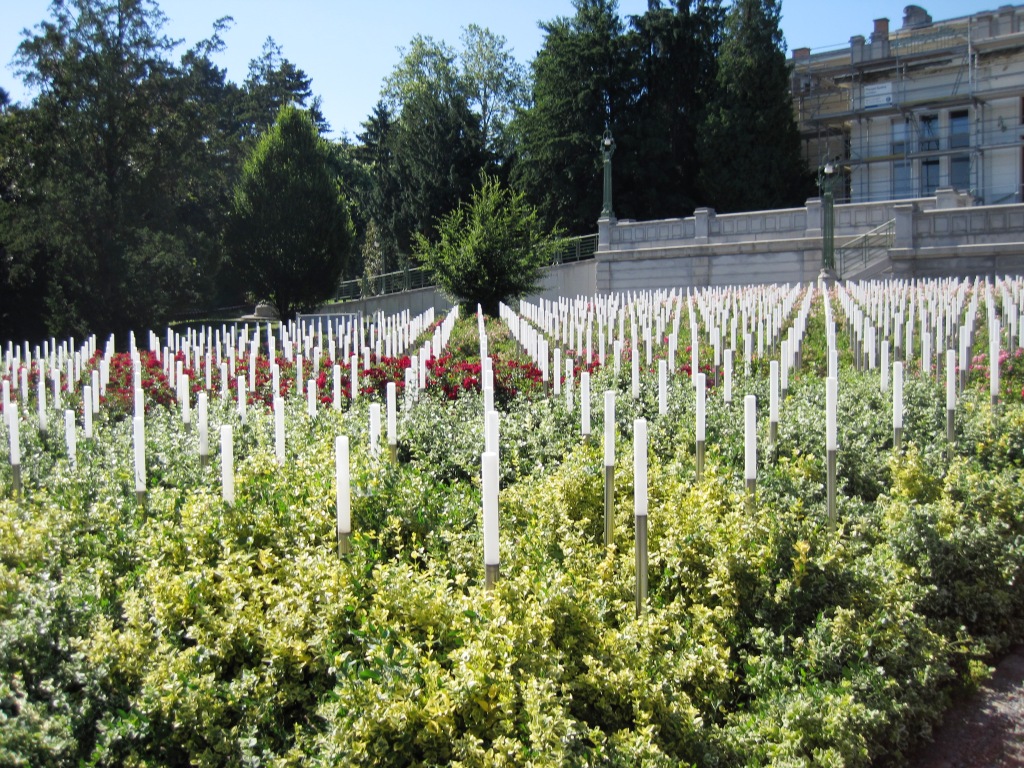
The exhibit online was revised and expanded since its inception,
and a revised on site exhibit opened in July 2008. A brochure is available.
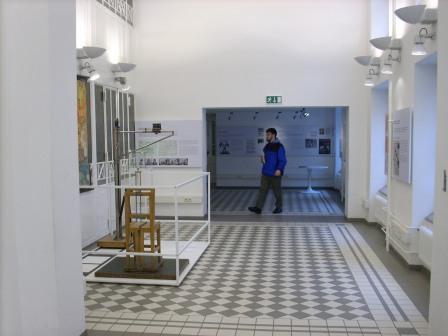 Source: Author
Source: Author
The exhibit includes a part on "children's euthanasia," also available online (in German/English).
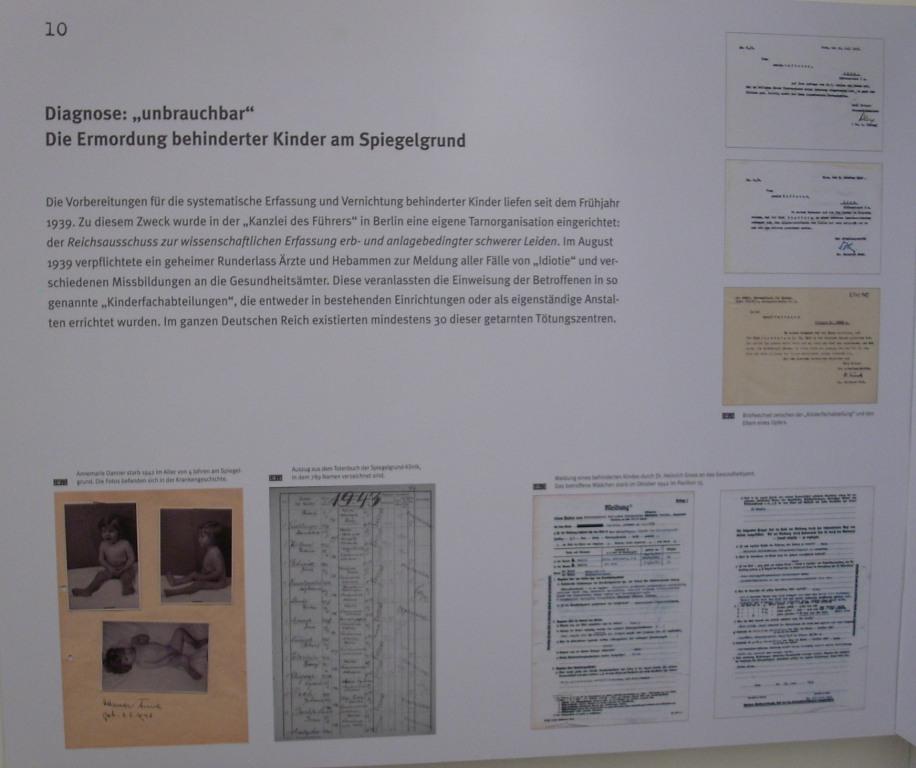 Source: Author
Source: Author
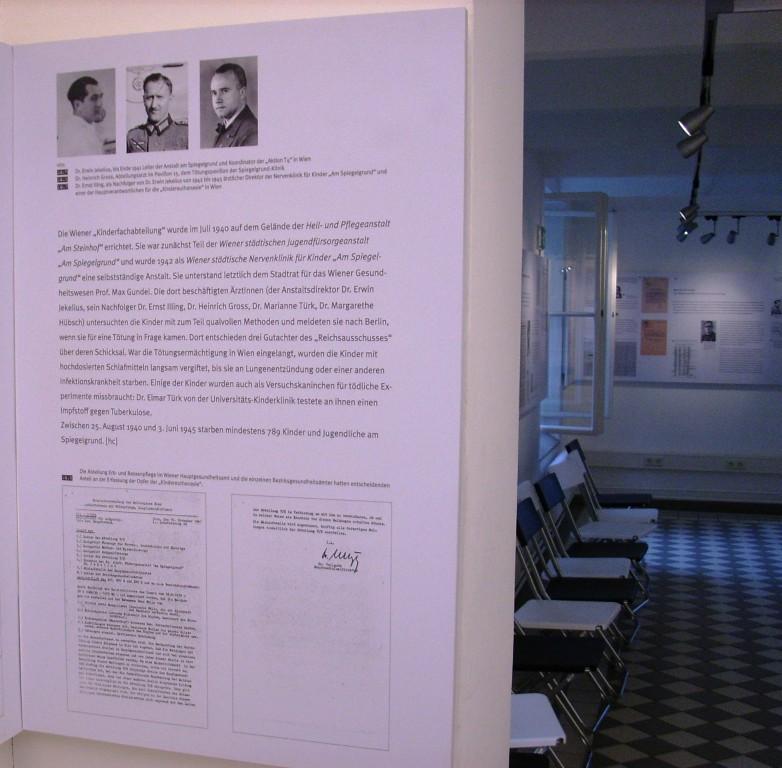 Source: Author
Source: Author
On site guided tours of the exhibit are offered to visitors (in
2008: 88), mostly to school classes. Also, at the site Friedrich Zawrel
periodically offers talks about about his personal experiences with the
"Kinderfachabteilung." A report on his talk can be found here.
At the clinic an annual memorial takes place in November. It is organized by
the local district governor of the SPÖ, Andrea Kalchbrenner, and
Waltraud Häupl, a sister to one of the child victims and long-term advocate
of commemoration of these crimes. The choir of the local high school
contributes musical elements and there are reminiscenses about the victims
and their suffering. The attendants conclude the event by placing white
roses at the field of stelae.
Source: Wolfgang Krisch
The Wiener Stadt- und Landesarchiv put together an exhibit entitled
"Kindereuthanasie in Wien 1940 bis 1945 - Krankengeschichten als Zeugen"
(Children's Euthanasia in Vienna, 1940 -1945: Medical Records as Witnesses),
which was shown there in 2005 and is still available online. The occasion for this exhibit was the transfer
of the medical records to the archive. This exhibit was also shown for some
time in the theater on the premises of the clinic.
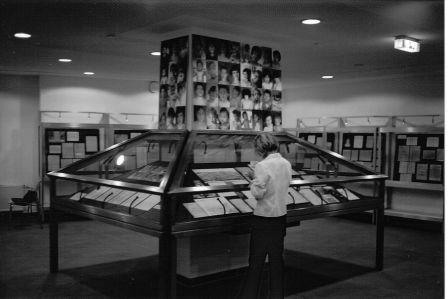 Source:
http://www.dnms.no/bilder/org120.jpg
Source:
http://www.dnms.no/bilder/org120.jpg
There is also a display right in front of pavilions 15 and 17, detailing
some of the events that happened there as part of a "historical path,"
established in 2007. There is a guided tour once a week, and it includes a
brief stop at the exhibit.
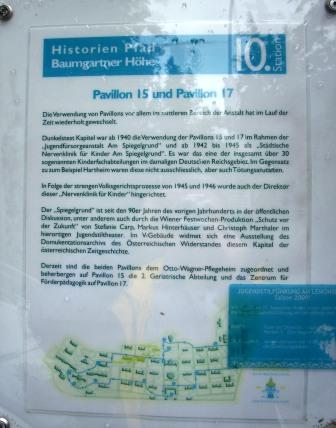 Source: Author
Source: Author
In 2012, the online exhibit was revised, particularly by the addition of
video testimony by witnesses, and the onsite exhibit expanded with the
addition of parts of the exhibit of the Wiener Stadt- und Landesarchiv.
As further remains of victims of NS-medicine in Vienna had been discovered,
they were buried on 9 May 2012 at the Central Cemetery in Vienna. The
remains could be attributed to 61 victims, whose names are listed on the
memorial stone. Also buried where the medical specimens of additional number
of 27 victims of the Kinderfachabteilung at the Spiegelgrund.
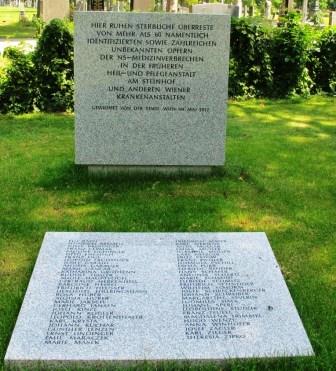 Source:
http://www.sagen.at/fotos/showphoto.php/photo/30067/size/big/cat/
Source:
http://www.sagen.at/fotos/showphoto.php/photo/30067/size/big/cat/
A recent article
by the author has addressed the fate of Jewish children with disabilities
who became victims at the Spiegelgrund (Kaelber, 2013).
There is a searchable data base of the victims here:
http://www.doew.at/personensuche;
and the entry on the Spiegelgrund in wikipedia is extensive: http://de.wikipedia.org/wiki/Am_Spiegelgrund
Most recently, there have been a number of developments:
- a local commemoration of the victims by local students occurred on 20 Nov.
2014 (see here; program);
- Friedrich Zawrel's death on 20. Feb. 2015 had a large echo in the Austrian
press;
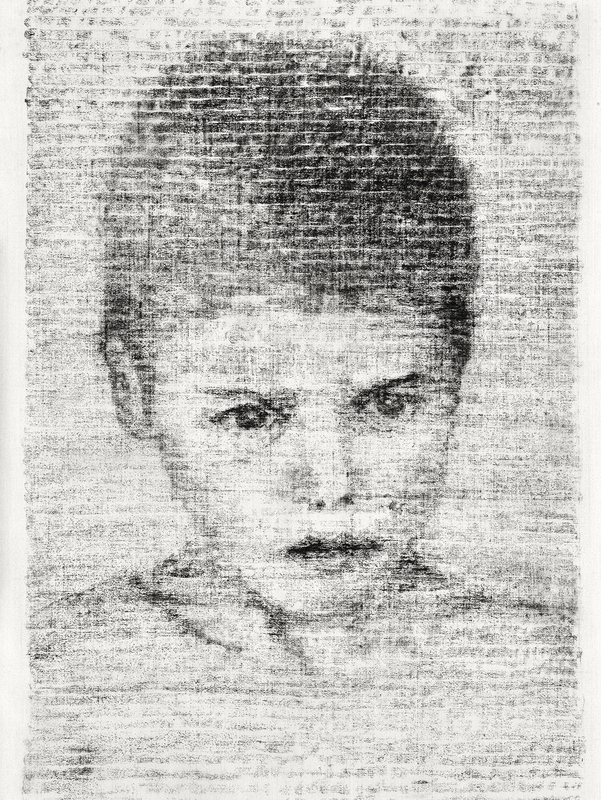 source: http://www.leopoldmuseum.org/media/image/800/2020.jpg
source: http://www.leopoldmuseum.org/media/image/800/2020.jpg
- the exhibit "Painting against Forgetting" (Zeichnen gegen das Vergessen)
includes a portrait of Johan K., who was killed at the Spiegelgrund in 1943
(a flyer);
- a report by a working group addressed abusive conditions at the Steinhof
(Otto-Wagner Spital) for disabled minors as patients there between 1960 and
1980 (see here);
- a stumbling block for Spiegelgrund victim Hansi Thaler was placed in St.
Johann at a former residence of his parents in 2014 (here);
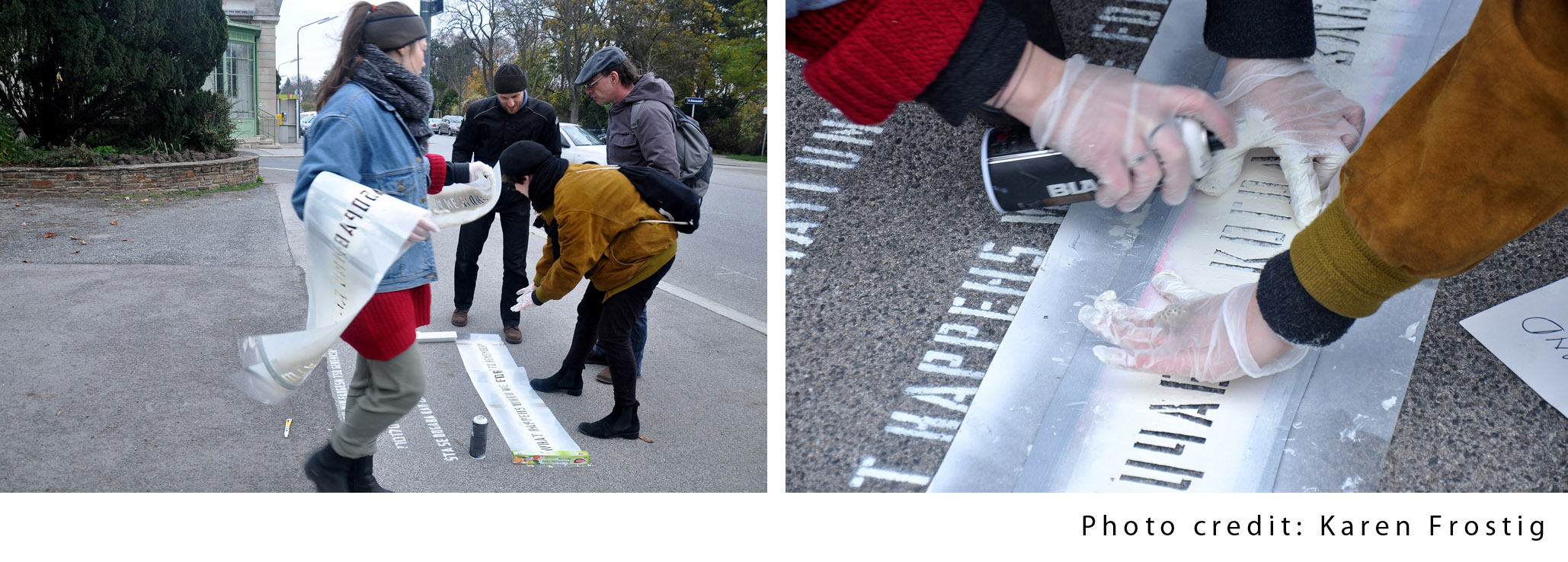 Source:
http://theviennaproject.org/wp-content/uploads/2011/04/Spitalgrund.jpg
Source:
http://theviennaproject.org/wp-content/uploads/2011/04/Spitalgrund.jpg
- the Spiegelgrund was part of the social media project "The Vienna
Project," with 38 "memory spaces." A hand-cut stencils were used to spray
the tag "What happens when we forget to remember?" onto the pavement at the
entrance of the hospital (see here).
Recent attention to the Spiegelgrund has been paid by the science author Steve Silberman in his book NeuroTribes,
which in one chapter addresses "children's euthanasia" in the context of
Viennese medicine under der Nazis, with a particular focus on Dr. Hans
Asperger. The author does not engage with some of the most recent literature
(much of it in German). This literature includes the foundational studies by
Herwig Czech (2011, 2014a, 2015), who shows Dr. Asperger, who was head of
the Heilpädagogische Abteilung
(Department for Special Education/Orthopedagogy) of the University Pediatric
Clinic at the time, to have been part of a commission as a "special
education consultant" for the city of Vienna, in 1942 to assess the
"educability" of children at the children's facility Gugging, of whom 35
were then found "not educable" and sent to the Spiegelgrund. Of the 29 of
these of these children sent there in 1942, all died. At the Pediatric
Clinic, at least one case is known in which Dr. Asperger by way of his
evaluation initiated the direct transfer of a child to the Spiegelgrund, the
almost-three-year old Herta Schreiber, in 1941. The child died less than 3
months after Dr. Asperger's evaluation, at a time when there was little
question among leading medical practitioners about the role of the
Spiegelgrund as a killing facility for infants and children.
Literature
Benzenhöfer, Udo. 2003. "Genese
und
Struktur der 'NS-Kinder- und Jugendlicheneuthanasie.'" Monatsschrift
für Kinderheilkunde 151: 1012-1019.
Berger, Ernst (ed.). 2007. Verfolgte
Kindheit: Kinder und Jugendliche als Opfer der NS-Sozialverwaltung.
Vienna: Böhlau.
cp-architektur. 2005. "Exhibition e985
gedenkstätte steinhof." Available at http://www.cp-architektur.com/projects/e985_gedenkstaette_steinhof/E985%20gedenkstaette%20steinhof_web.pdf
Czech, Herwig. 2007. "Gedenkstätte
Steinhof:
Ende eines Provisoriums." Gedenkdienst
4/07. Available at http://www.gedenkdienst.at/index.php?id=522.
———. 2008. "Der Krieg gegen die Minderwertigen: Neueröffnung der
Dauerausstellung zur Geschichte der NS-Medizin im Otto-Wagner-Spital in
Wien." Mitteilungen des
Dokumentationsarchivs des österreichischen Widerstandes 188:
1-4.
Available at http://www.doew.at/aktuell/mitt/mitt_archiv/188.pdf.
———. 2010. "Kinder und Jugendliche als Opfer der nationalsozialistischen
Medizinverbrechen in Österreich." Pp. 137-55 in Geraubte
Kindheit: Kinder und Jugendliche im Nationalsozialismus, edited by
the Bundesjugendvertretung. Vienna: edition Mauthausen.
———. 2011. "Zuträger der Vernichtung? Die Wiener Universitäts-Kinderklinik
und die NS-Kindereuthanasieanstalt 'Am Spiegelgrund.'" Pp. 23-54 in Festschrift
100 Jahre Wiener Universitätsklinik für Kinder- und Jugendheilkunde,
edited by Arnold Pollak. Vienna: Universitätsklinik für Kinder- und
Jugendheilkunde.
———. 2012. "NS-Medizinverbrechen in Wien: Aktuelle Stationen der
Aufarbeitung." DÖW Mitteilungen
207 (July). Available at http://www.doew.at/cms/download/6epo2/207.pdf
———. 2014a. "Der Spiegelgrund-Komplex: Kinderheilkunde, Heilpädagogik,
Psychiatrie und Jugendfürsorge im Nationalsozialismus." Österreichische
Zeitschrift für Geschichtswissenschaften 25, 1: 189-214.
———. 2014b. "Abusive Medical Practices on 'Euthanasia' Victims in Austria
During and After World War II." Pp. 109-25 in Human
Subjects Research after the Holocaust, edited by Sheldon Rubenfeld
and Susan Benedict. New York: Springer.
———. 2015. "Dr. Hans Asperger und die 'Kindereuthanasie' in Wien – mögliche
Verbindungen." Pp. 24-29 in Auf den
Spuren Hans Aspergers: Fokus Asperger-Syndrom: Gestern, Heute, Morgen,
edited by Arnold Pollak. Stuttgart: Schattauer.
Documentation Center of Austrian Resistance. "Der
Krieg gegen die 'Minderwertigen': Zur Geschichte der NS-Medizin in Wien."
Website: http://www.doew.at/projekte/ns_medizin/steinhof.html
Dahl, Mathias. 2004. Endstation
Spiegelgrund: Die Tötung behinderter Kinder während des
Nationalsozialismus am Beispiel einer Kinderfachabteilung in Wien 1904
bis 1945. 2nd ed. Vienna: Erasmus.
Ein ganz normaler
Arzt [film]. Reg. Andreas Novak. 2000.
Ertl, Karin A. 2012. "NS-Euthanasie in Wien: Erwin
Jekelius: Der Direktor vom 'Spiegelgrund' und seine Beteiligung am
NS-Vernichtungsprogramm." Master's thesis in social science, university of
Vienna. Available at http://othes.univie.ac.at/18809/1/2012-01-23_0303855.pdf
Gedenkstätte Steinhof.
"War Against the 'Inferior': On the History of Nazi Medicine in
Vienna". Website: http://www.gedenkstaettesteinhof.at/en/index.shtml
Grey Matter [film]. Dir. Joe
Berlinger. 2004.
Gross, Johann. 2000. Spiegelgrund: Leben
in NS-Erziehungsanstalten. Vienna: Ueberreuter.
Häupl, Waltraud. 2006. Die ermordeten Kinder vom Spiegelgrund:
Gedenkdokumentation für die Opfer der NS-Kindereuthanasie in Wien.
Vienna: Böhlau.
———. 2008. Der
organisierte Massenmord an Kindern und Jugendlichen in der Ostmark
1940-1945: Gedenkdokumentation für die Opfer der NS-Euthanasie.
Vienna: Böhlau.
Irmler, Andreas. 2008. "'Spiegelgrund' und Dr. Gross:
Mediale Thematisierung im Spiegel der. NS-Aufarbeitung in Österreich nach
1945 und in dere Wahrnehmung ehemaliger 'Kinder vom Spiegelgrund.'"
Master's thesis, Dept. of Journalism and Communication Science, University
of Vienna.
Ischepp, Nicole. 2012. "Die 'Asozialen' in der Anstalt
Am Spiegelgrund." Graduate thesis in philosophy and education, University
of Vienna. Available at http://othes.univie.ac.at/22798/1/2012-09-25_0208101.pdf
Kaelber, Lutz. 2010. "Virtual Traumascapes: The
Commemoration of Nazi ‘Children’s Euthanasia’ Online and On Site." Digital Icons: Studies in Russian, Eurasian
and Central European New Media 4: 13-44. Available at http://www.digitalicons.org/issue04/files/2010/11/Kaelber-4.2.pdf.
———, and Raimond Reiter, eds. 2011. Kindermord
und "Kinderfachabteilungen" im Nationalsozialismus: Gedenken und Forschung.
Hamburg: Peter Lang.
———. 2013. "Jewish Children with Disabilities and Nazi 'Euthanasia' Crimes."
Bulletin of the Carolyn and Leonard Miller
Center for Holocaust Studies 17. PDF
Kaufmann, Alois. 2007. Totenwagen:
Kindheit am Spiegelgrund. Vienna: Mandelbaum.
Kepplinger, Brigitte. 2008. "Gedenkstätten für die Opfer der NS-Euthanasie in Österreich."
Pp. 549-99 in Tötungsanstalt
Hartheim, 2nd ed., edited by Brigitte
Kepplinger,
Gerhart Marckhgott, and Hartmut Reese. Linz:
Oberösterreichisches Landesarchiv.
Koller, Birgit. 2009. "Die mediale Aufarbeitung der Opfer-Täter-Rolle in der
Zweiten Republik dargestellt anhand des Spielfilms Mein
Mörder." Master's thesis, Dept. of Journalism and Communication
Science, University of Vienna. Available at http://othes.univie.ac.at/3895/1/2009-03-05_9908420.pdf.
Kosemund, Antje. 2011. Sperlingskinder:
Faschismus und Nachkrieg: Vergessen ist Verweigerung der Erinnerung! Hamburg:
VSA.
Krisch, Wolfgang. 2002. "Die
Kinder vom Spiegelgrund." Available at http://www.wolfgangkrisch.at/Penzing/04Archiv/Spiegelgrund-Rueckblick,220402.htm
———. 2005. "Kinder vom Spiegelgrund: Versprochene
Forschungsstätte fehlt seit nunmehr 5 Jahren." Available
at http://www.wolfgangkrisch.at/Penzing/01Aktuelles,Neuigkeiten/Spiegelgrund-Forschungsstaette_fehlt_seit_5Jahren,23.6.07.htm
Lehmann, Oliver, and Traudl Schmidt. 2001. In
den Fängen des Dr. Gross: Das misshandelte Leben des Friedrich Zawrel.
Vienna: Czernin.
Meine liebe Republik [film].Dir.
Elisabeth Scharang. 2007.
Mende, Susanne. 2000. Die Wiener Heil-
und Pflegeanstalt "Am Steinhof" im Nationalsozialismus. Frankfurt:
Lang.
Neugebauer, Wolfgang. 2000. "Zum Umgang mit der NS-Euthanasie in Wien nach
1945." Pp. 107-25 in NS-Euthanasie in
Wien, edited by Eberhard Gabriel and Wolfgang Neugebauer..
———, and Georg Stacher. 1999. "Nazi Child 'Euthanasia' in Vienna and the
Scientific Exploitation of its Victims before and after 1945." Digestive
Diseases 17: 279-85.
Oelschläger, Thomas. 2003. "Zur Praxis der NS-Kinder-"Euthanasie" am
Beispiel Österreichs." Monatsschrift
Kinderheilkunde 10:1033-42.
Rigele, Brigitte. 2005. Kindereuthanasie
in Wien 1940–1945: Krankengeschichten als Zeugen. Vienna: Wiener
Stadt- und Landesarchiv.
Schölnberger, Pia. 2008. "'Wir sind doch nicht Frankensteins Nachfolger':
Die Karrieren des Dr. Heinrich Gross (1915-2005)." Pp. 135-47 in Täterschaft - Strafverfolgung -
Schuldentlastung: Ärztebiografien zwischen nationalsozialistischer
Gewaltherrschaft und deutscher Nachkriegsgeschichte, edited by
Boris Böhm and Norbert Haase. Leipzig: Leipziger Universitätsverlag.
Spiegelgrund [film]. Dir. Angelika
Schuster and Tristan Sindelgruber. 2000.
Thomas, Florian P., Alana Beres, and Michael I. Shevell. 2006. "’A Cold Wind
Coming’: Heinrich Gross and Child Euthanasia in Vienna.” Journal
of Child Neurology 21 (4): 342-48.
Topp, Sascha. 2004. “Der ‘Reichsausschuss zur wissenschaftlichen Erfassung
erb- und anlagebedingter schwerer Leiden’: Zur Organisation der Ermordung
minderjähriger Kranker im Nationalsozialismus 1939-1945.” Pp. 17-54 in Kinder
in der NS-Psychiatrie, edited by Thomas Beddies and Kristina Hübener.
Berlin-Brandenburg: Be.bra Wissenschaft.
———. 2005. "Der 'Reichsausschuß zur wissenschaftlichen
Erfassung erb- und anlagebedingter schwerer Leiden': Die Ermordung
minderjähriger Kranker im Nationalsozialismus 1939-1945." Master's Thesis
in History, University of Berlin.
Vörös, Lukas. 2010. "Kinder- und Jugendlicheneuthanasie
zur Zeit des Nationalsozialismus am Wiener Spiegelgrund." Master's
Thesis,Historisch-Kulturwissenschaftliche Fakultät, University of Vienna.
Available at http://othes.univie.ac.at/9480/1/2010-03-09_0501134.pdf.
Weindling, Paul. 2011. "From Scientific Object to Commemorated Victim: The
Children of the Spiegelgrund." Pp. 77-88 in Microscope
Slides: Reassessing a Neglected Historical Resource, edited by
Ilana Löwy. Max Planck Institute for the History of Science.
Last updated: 29 August 2015
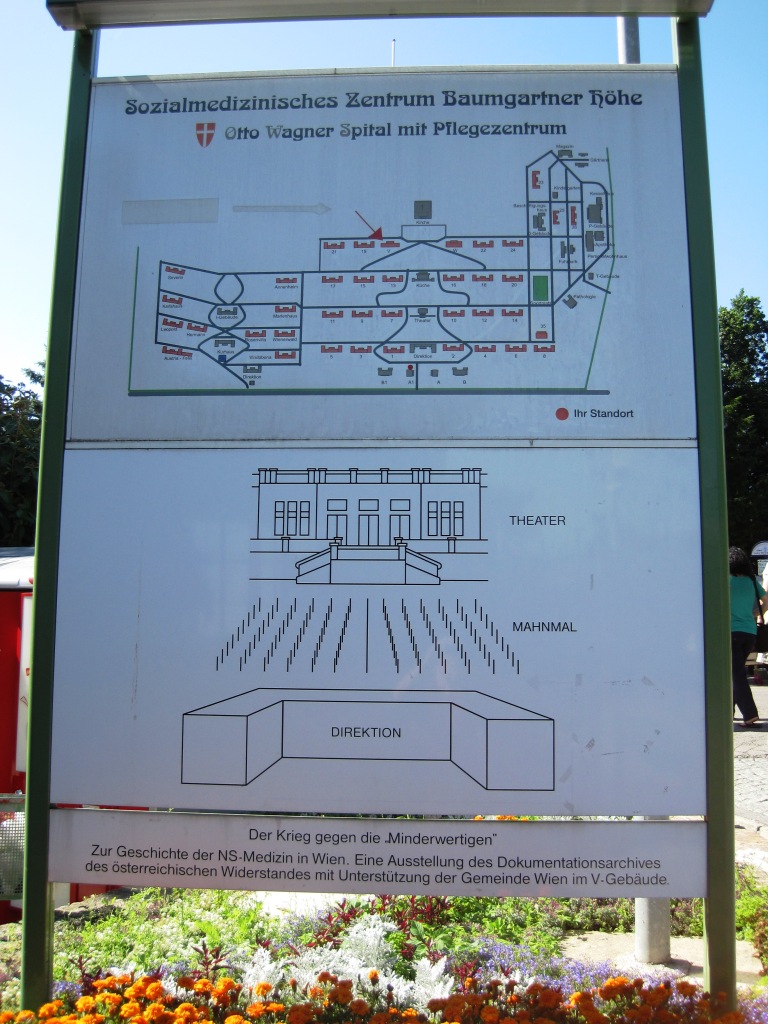
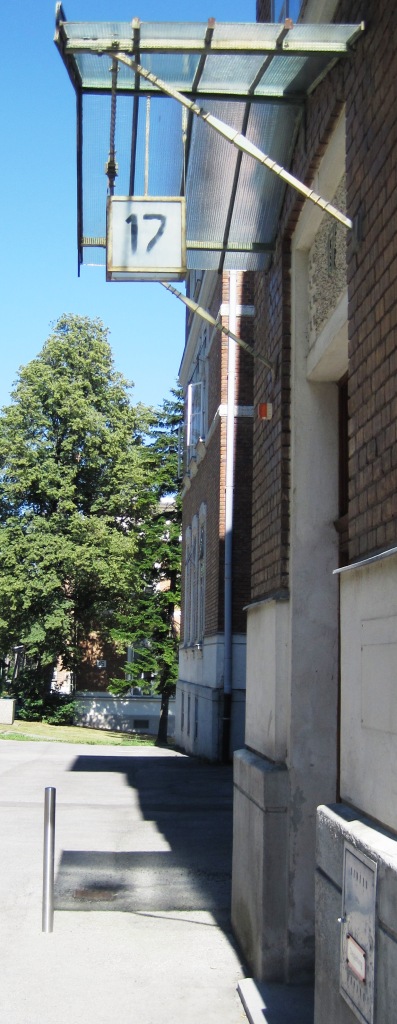
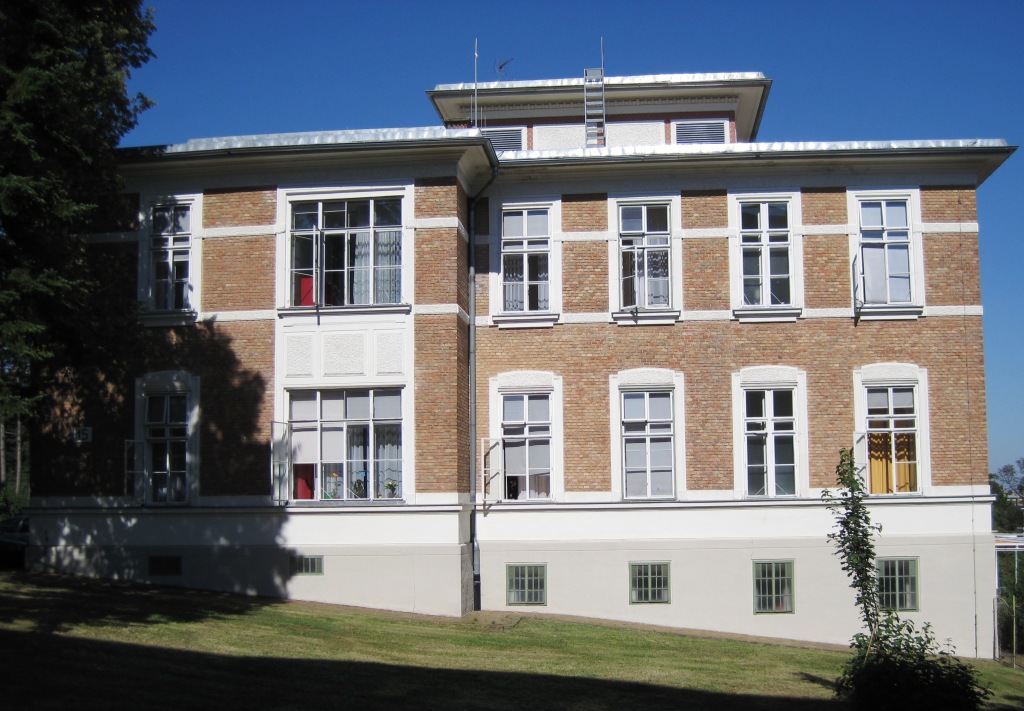
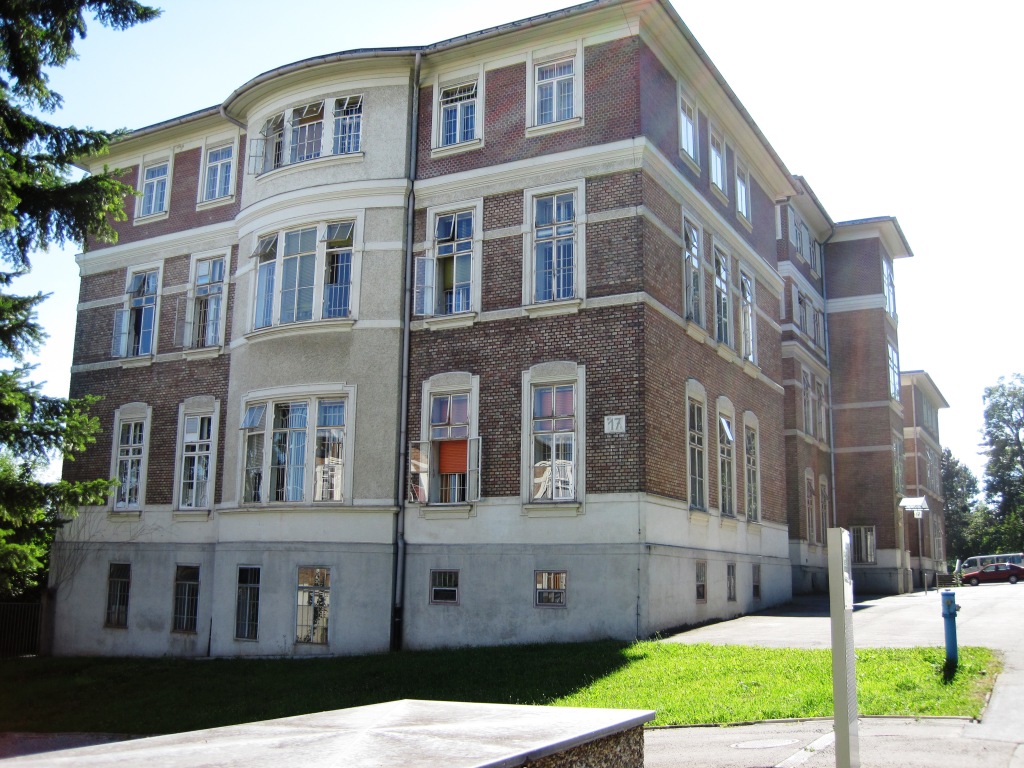






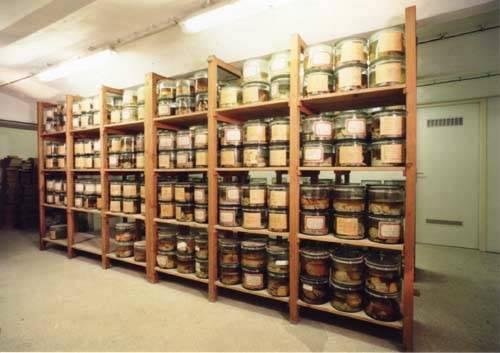
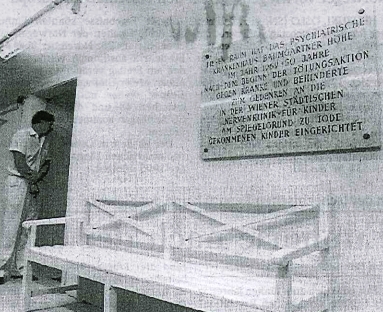
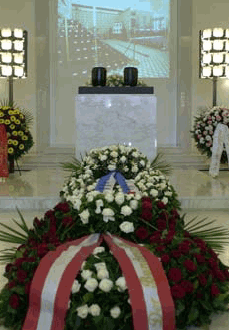
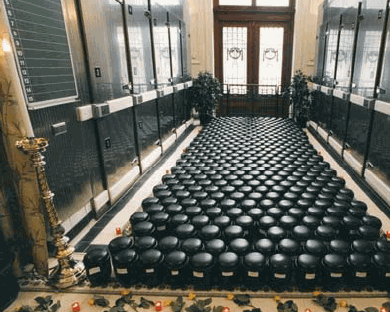
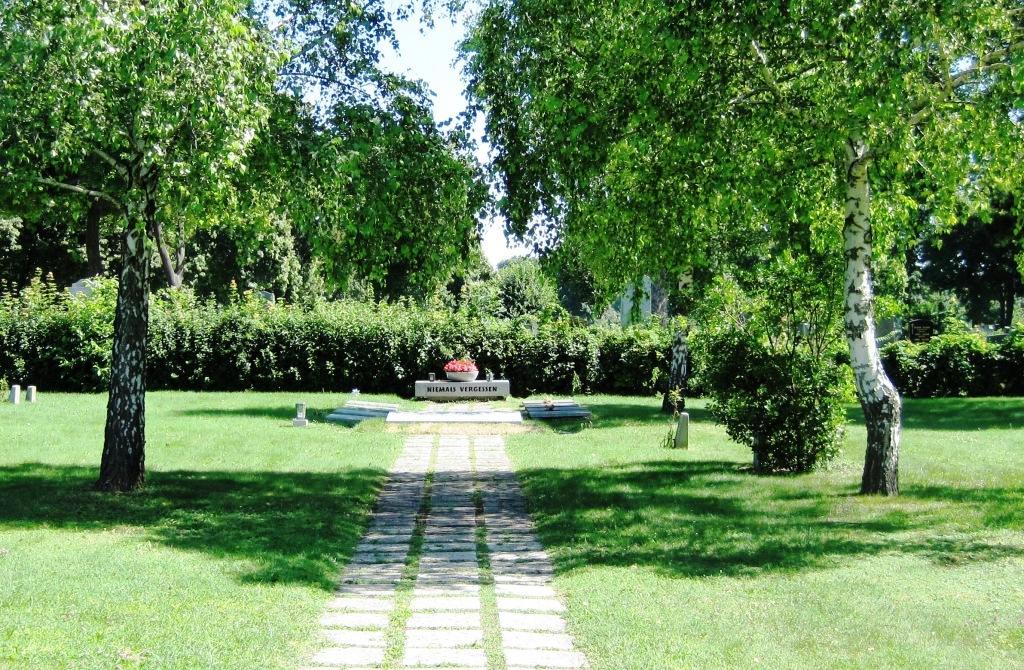
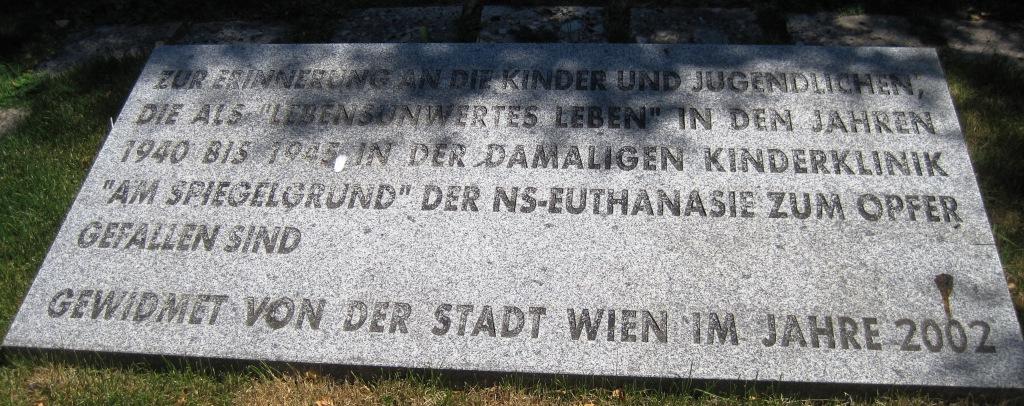
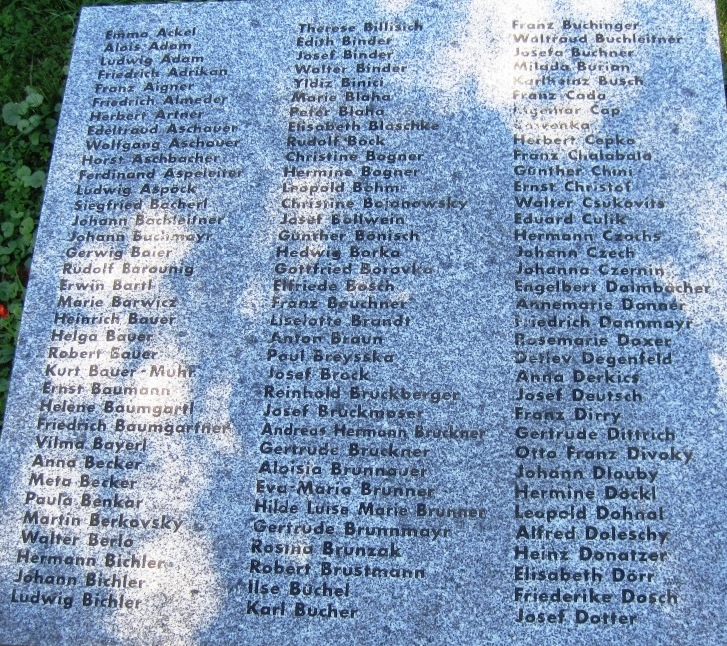
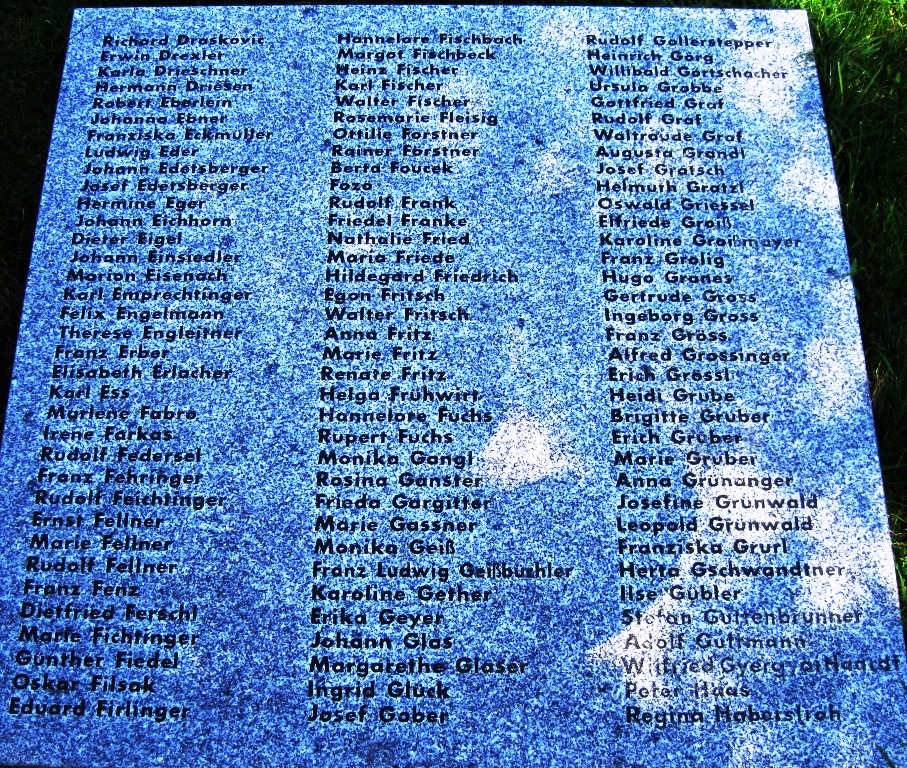
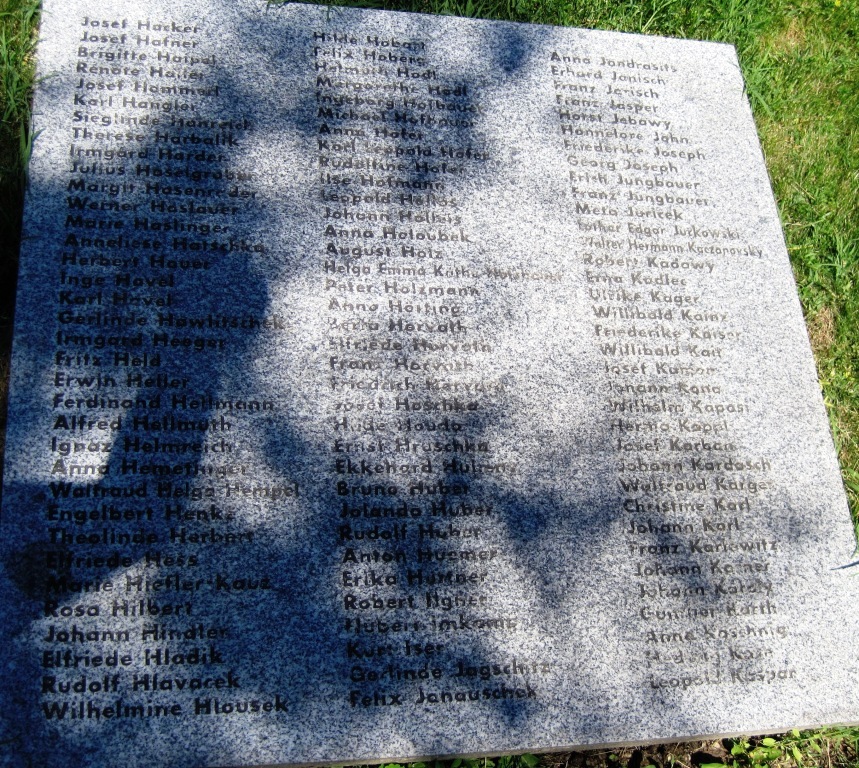
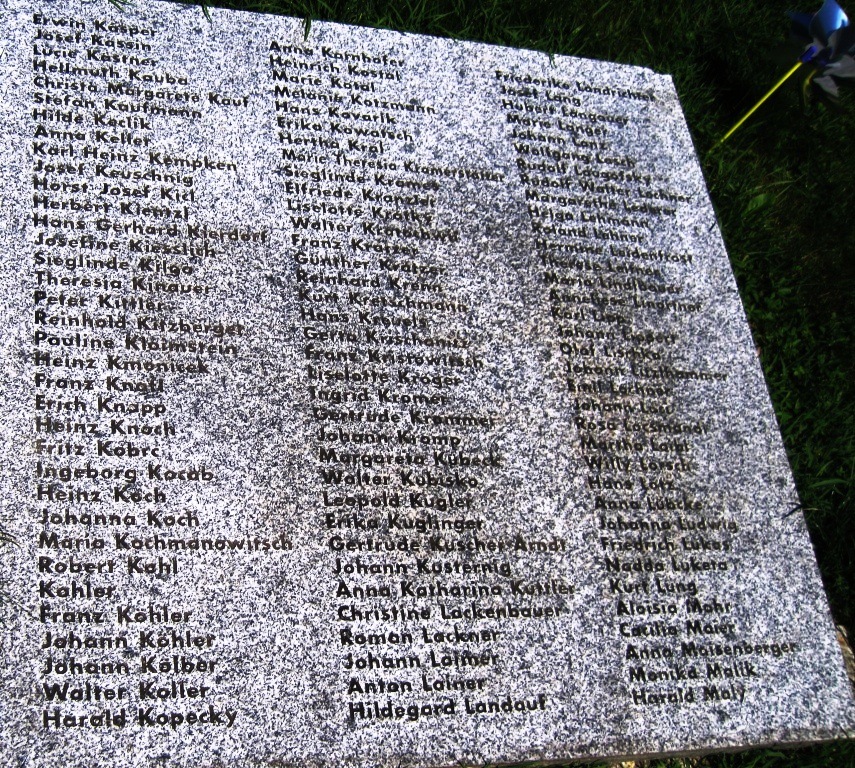
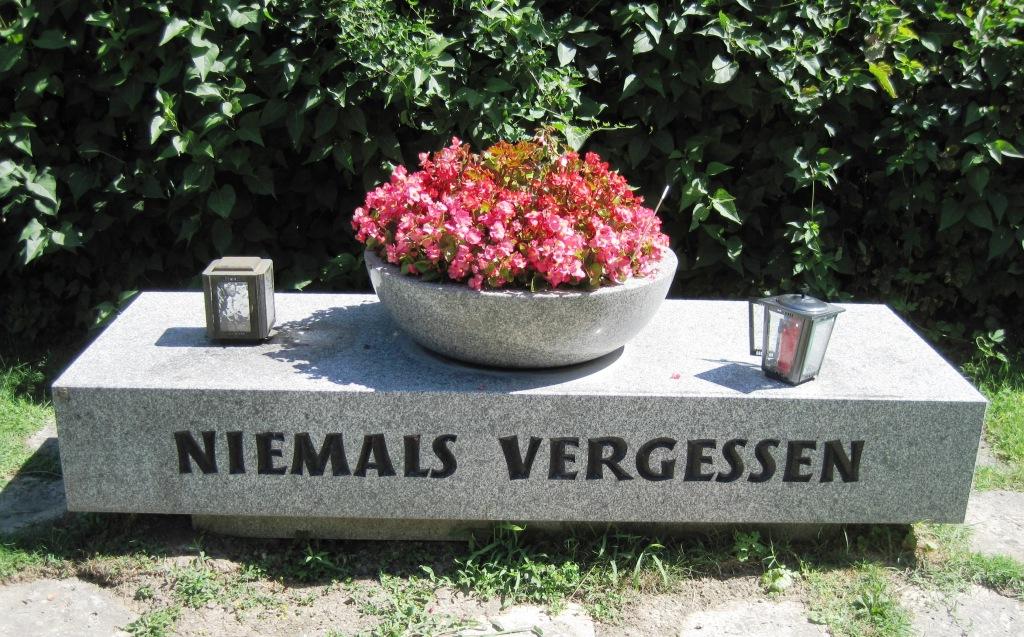
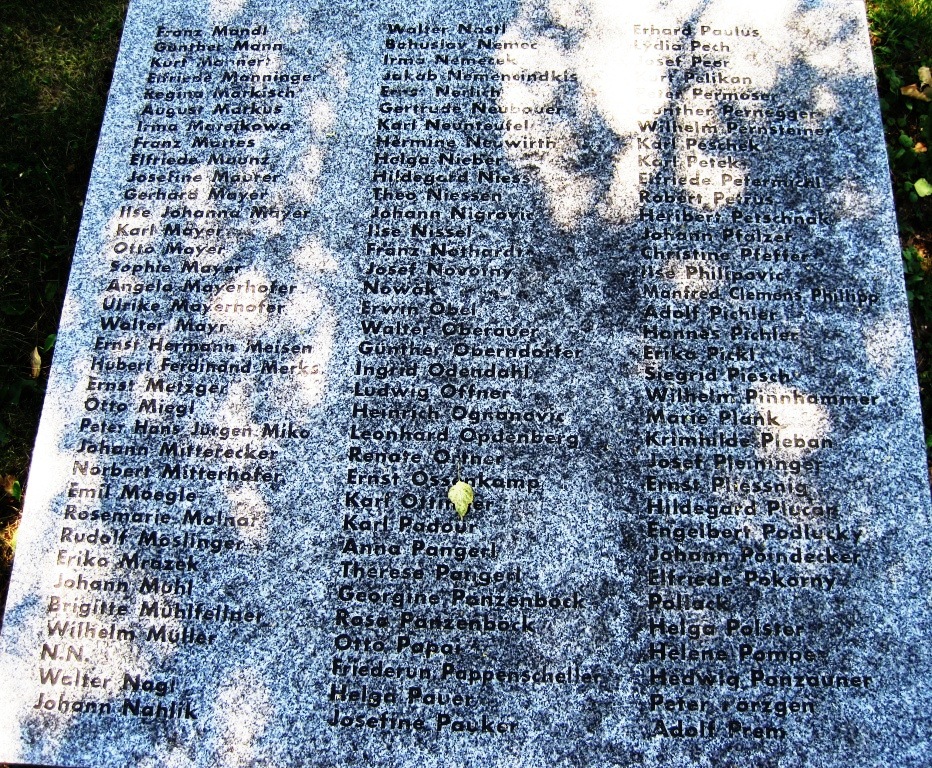
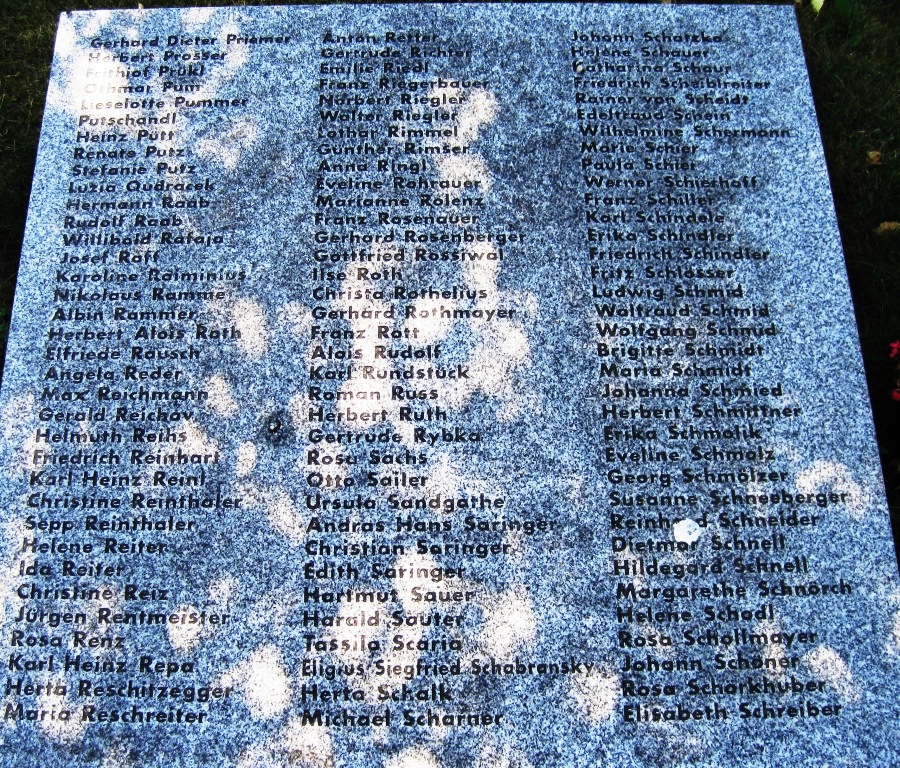
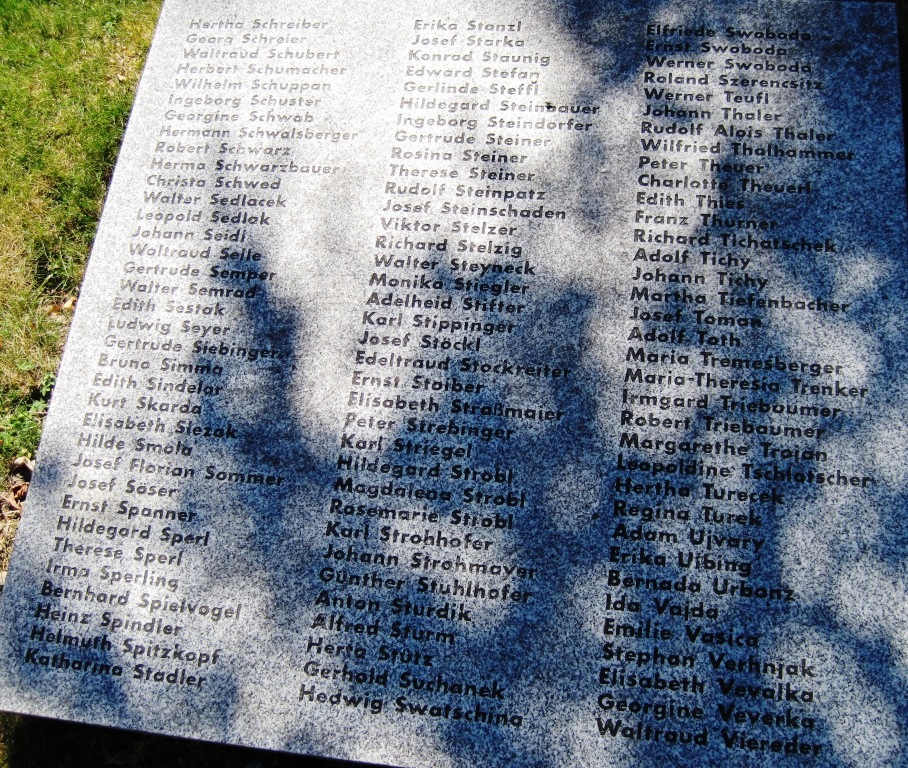
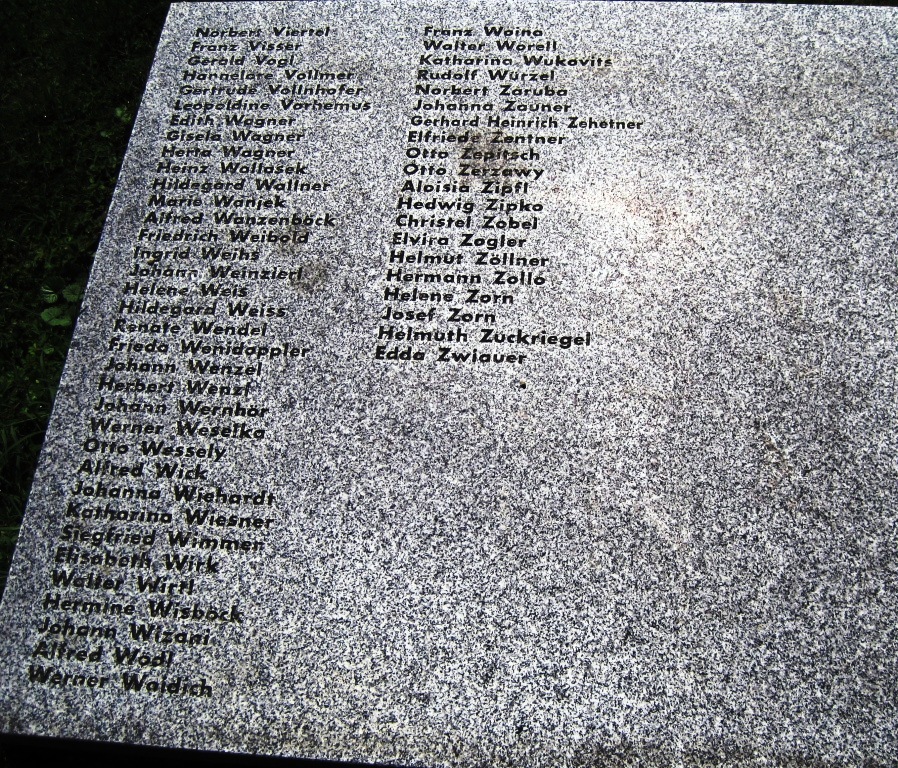


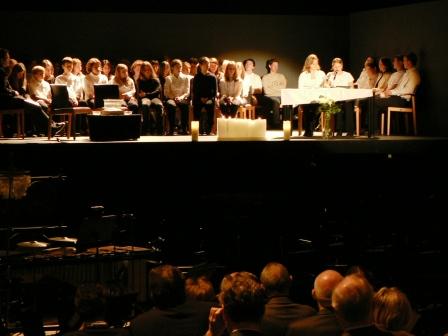
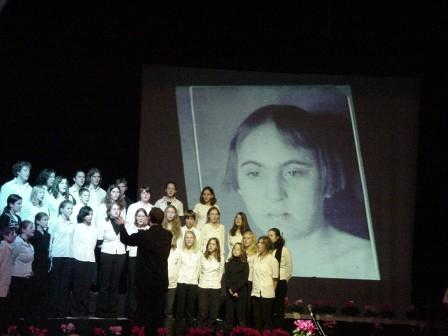
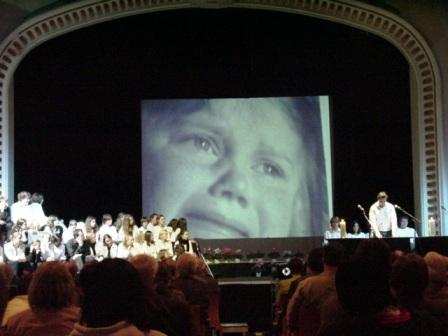
 Source:
http://www.dnms.no/bilder/org120.jpg
Source:
http://www.dnms.no/bilder/org120.jpg Source:
http://www.sagen.at/fotos/showphoto.php/photo/30067/size/big/cat/
Source:
http://www.sagen.at/fotos/showphoto.php/photo/30067/size/big/cat/ source: http://www.leopoldmuseum.org/media/image/800/2020.jpg
source: http://www.leopoldmuseum.org/media/image/800/2020.jpg Source:
http://theviennaproject.org/wp-content/uploads/2011/04/Spitalgrund.jpg
Source:
http://theviennaproject.org/wp-content/uploads/2011/04/Spitalgrund.jpg